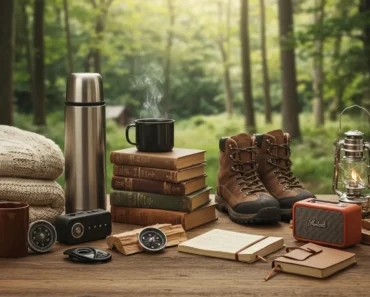Playrooms offer a dedicated space for children to explore and grow. Parents across the United States set up these areas to encourage play and keep toys contained. In 2025, with homes varying from apartments in New York to spacious houses in Texas, playrooms adapt to different needs. This guide examines if playrooms suit your family. You will find benefits, challenges, design ideas, and safety tips. Families report that a well-planned playroom boosts child development and eases daily life.
Children spend hours in playrooms building skills like problem-solving and social interaction. Parents gain a tidier home. Yet, not every setup works. Space limits and upkeep play roles. Read on to decide.
This article draws from recent expert views and US guidelines to provide balanced advice.
Benefits of Dedicated Playrooms
Playrooms provide clear advantages for children and parents. Experts note that these spaces foster independence. Kids learn to navigate their environment without constant supervision. In a playroom, children engage in creative play that builds brain connections.
One key benefit comes from organized play. Children sort toys and clean up, which teaches responsibility. Studies show that such routines help with executive function skills. Parents keep living areas free of clutter. This setup works well in busy US households where time matters.
Top Benefits for Kids
- Encourages independent play: Children explore at their pace.
- Boosts creativity: Open space allows imagination to flourish.
- Teaches sharing: Siblings or friends interact in a shared area.
- Supports development: Play builds motor skills and language.
- Provides safety: Contained space reduces household risks.
For parents, playrooms mean less mess in main rooms. You designate one area for toys, which simplifies cleanup. Playdates become easier too. Friends visit without toys spreading everywhere. In 2025, with remote work common, a playroom lets parents focus while kids play nearby.
Experts like early childhood specialists highlight how playrooms aid emotional growth. Children process feelings through role-play. This benefit stands out in families with multiple kids. The space creates boundaries between play and rest, improving sleep routines.
Long-Term Value
A playroom adds appeal when selling a home. Buyers with young children remember unique features like built-in storage. Realtors report that such spaces make houses stand out in the US market. You invest in family memories that last.
Overall, playrooms support healthy habits. Families find joy in watching kids thrive.
Potential Drawbacks of Playrooms
Playrooms have downsides too. Space comes at a premium in many US homes. You might convert a bedroom or basement, which limits options. Maintenance demands time. Toys pile up if not managed.
Children sometimes ignore the playroom. They play where parents are, like the kitchen. This issue frustrates setups. Experts warn that isolated spaces lead to underuse. In apartments, noise travels, disturbing neighbors.
| Pros | Cons |
|---|---|
| Fosters creativity and independence | Takes up valuable space |
| Keeps home tidy | Requires regular cleaning |
| Enhances playdates | Kids may not use it |
| Boosts resale value for families | May deter non-family buyers |
Safety risks exist if not addressed. Loose toys cause trips. Over-customization hurts home value. Realtors advise against major changes like climbing walls unless permanent. In 2025, with rising home prices, you balance fun and practicality.
Cost Considerations
Setup costs add up. Furniture and storage run hundreds of dollars. Ongoing expenses include toy replacements. Families on budgets repurpose rooms instead. This approach saves money while meeting needs.
Drawbacks exist, but solutions mitigate them. Weigh your home’s layout.
2025 Playroom Design Trends in the US
Design trends evolve each year. In 2025, playrooms embrace bold and personal touches. Designers focus on functionality with style. US families seek spaces that grow with kids.
Bold colors lead the way. Vibrant walls spark joy. Personalization adds unique elements like name murals. These features make playrooms inviting.
Key Trends for 2025
- Bolder, personalized rooms: Use wallpaper for custom looks.
- Decorative ceilings: Add murals or mobiles for whimsy.
- Built-ins: Create storage lofts for efficiency.
- Celebrations of creativity: Install art ledges at kid height.
- Creative storage: Magnetic walls hold small toys.
Nature-inspired decor gains popularity. Botanical wallpapers bring calm. Muted pastels balance energy. Multifunctional furniture serves dual purposes, like storage ottomans.
Sustainable Choices
Eco-friendly materials trend strong. Recycled rugs and wooden toys appeal to green families. In the US, brands offer durable, non-toxic options. These choices last longer and support the environment.
Whimsical patterns add fun. Adventure themes with celestial motifs inspire exploration. Families mix zones for reading, building, and active play.
Applying Trends to Small Spaces
Urban homes use vertical storage. Wall-mounted shelves save floor space. This setup fits apartments in cities like Chicago.
Trends make playrooms modern and practical. Choose what fits your style.
Safety Guidelines for Children’s Playrooms
Safety tops the list in playroom design. US guidelines from the CPSC ensure protection. In 2025, updates to standards like ASTM F406-24 strengthen requirements.
Play yards in playrooms must meet height and strength rules. Sides prevent escapes, floors support weight. Mesh avoids entanglement.
Essential Safety Steps
- Secure furniture to walls with brackets.
- Use soft flooring like rubber mats.
- Choose age-appropriate toys without small parts.
- Install outlet covers and cord shorteners.
- Label hazards and supervise young kids.
For more, check the CPSC Play Yards Guidance. This resource details federal rules.
2025 Updates
New rules effective April 2025 incorporate ASTM F406-24. These cover side deflection and mattress fit. Families benefit from safer products.
Follow guidelines to create secure spaces.
Common Issues with Playrooms and Solutions
Issues arise in playrooms, but fixes exist. Disorganization leads to chaos. Safety hazards hide in plain sight.
| Issue | Hazard/Solution |
|---|---|
| Stuffed toys | Suffocation risk; wash regularly, keep from sleep areas. |
| Magnets | Swallowing danger; store until age 6. |
| Tipping furniture | Anchor to walls with brackets. |
| Trampolines | Injury risk; replace with safer activities. |
| Art supplies | Ingestion issues; use non-toxic, supervise. |
| Small toys | Choking; keep out of reach under age 5. |
| Packaging | Suffocation; dispose immediately. |
Underuse happens when spaces feel distant. Place the playroom near family areas. Involve kids in organization to build habits.
Addressing Mess
Clutter builds fast. Rotate toys to keep interest high. Simple bins help kids sort items. This method cuts overwhelm.
Solutions turn challenges into strengths.
Step-by-Step Guide to Setting Up a Playroom
Set up a playroom with these steps. Start small for success.
Step 1: Choose the Space
Pick a room or corner. Basements work in larger homes. Ensure good light and ventilation.
Step 2: Plan Layout
Divide into zones: active, quiet, storage. Sketch a simple floor plan.
Step 3: Select Furniture
Opt for durable pieces. Low tables suit young kids. Add cushions for comfort.
Step 4: Add Storage
Use labeled bins. Wall shelves maximize space.
Step 5: Incorporate Safety
Anchor items and choose soft floors. Test for hazards.
Step 6: Decorate
Apply 2025 trends like bold colors. Involve kids for ownership.
Test the setup and adjust. This process creates a lasting space.
Unique Playroom Ideas for US Families
Stand out with creative concepts. Combine playroom with family room for versatility.
- Indoor climbing wall: Safe for active kids in rainy climates.
- Craft station: Built-in desk with washable surfaces.
- LEGO hack table: DIY from scrap wood for building fun.
- Sensory corner: Textures and lights for calming play.
- Theme zones: Adventure area with tents and maps.
For small homes, use multifunctional pieces. A sofa bed doubles as seating and nap spot. Eco-ideas include recycled material walls.
Tech integration adds value. Tablets for educational games fit 2025 trends. Balance screen time with physical play.
Family-Specific Twists
In Southern states, add cooling features. Northern families focus on cozy rugs. These adaptations suit regional needs.
Ideas spark joy and utility. Tailor to your crew.
For expert tips, visit the Realtor.com Playroom Guide.
Organization and Maintenance Tips for Playrooms
Keep playrooms functional with smart organization. In 2025, simple systems rule.
Top Tips
- Create zones: Separate toys by type.
- Label bins: Kids find items fast.
- Edit regularly: Donate unused toys twice yearly.
- Store by size: Small items in drawers.
- Use vertical space: Shelves reach high.
Involve children in cleanup. Make it a game. This habit sticks. For maintenance, vacuum weekly. Check safety monthly.
2025 Hacks
Magnetic strips hold metal toys. Rotating shelves limit choices to prevent overwhelm.
Consistent routines keep spaces inviting.
Playrooms serve families well when planned right. They offer space for growth and fun. Consider your home and needs to decide. With trends and tips from 2025, you build a spot that lasts. Enjoy the process and watch your kids flourish.
Frequently Asked Questions
1. Do playrooms really encourage more play?
Yes, dedicated spaces promote independent exploration. Kids use them more when organized and accessible.
2. How can I make a playroom safe on a budget?
Anchor furniture for free with brackets. Use affordable rubber mats for floors. Follow CPSC basics.
3. What if my home lacks space for a full playroom?
Create a corner zone with shelves and rugs. Multifunctional furniture maximizes area.
4. Are themed playrooms worth the effort?
They spark imagination but keep simple. Peel-and-stick options allow changes as kids grow.
5. How often should I reorganize the playroom?
Review every six months. Adjust for age and interests to maintain engagement.

